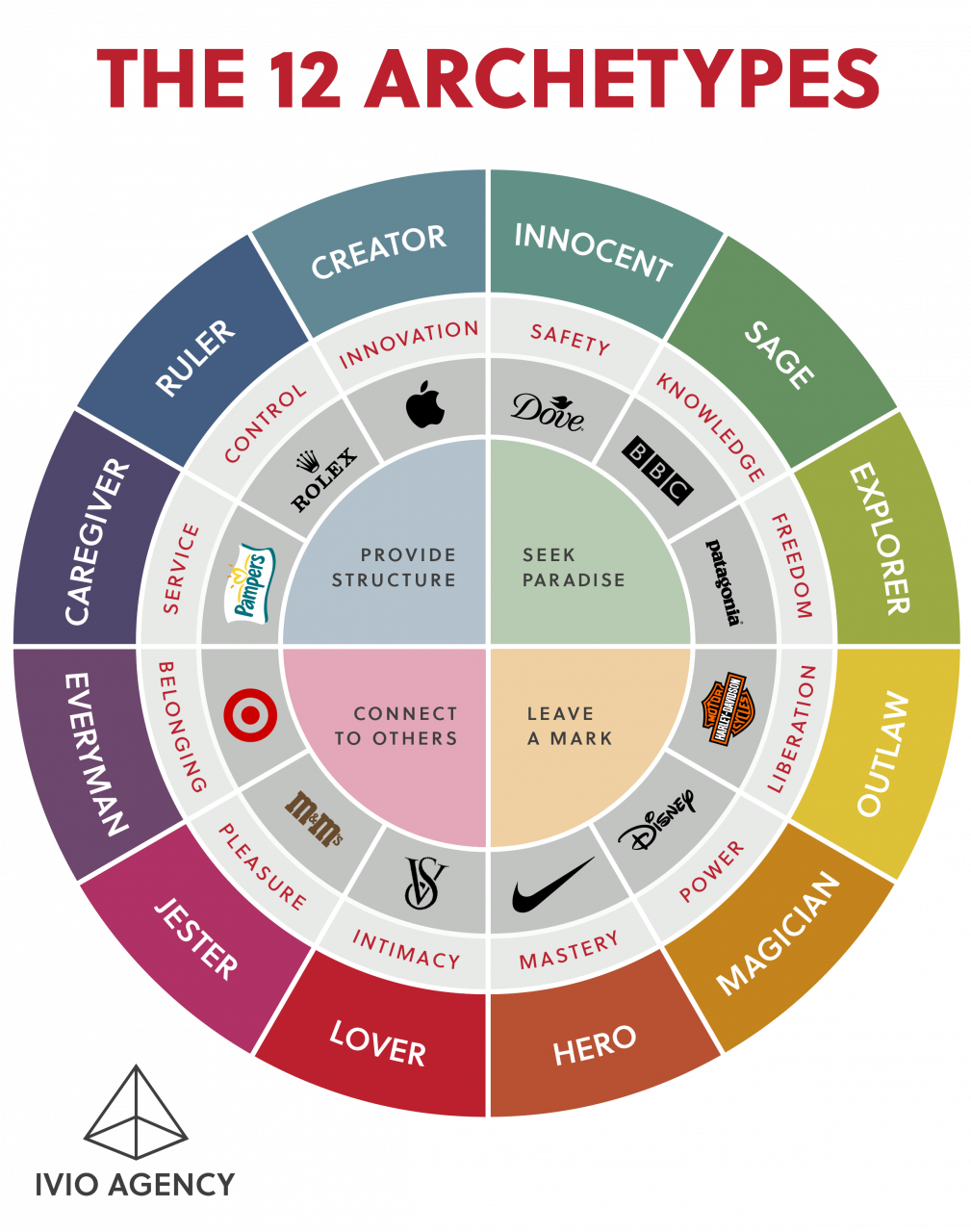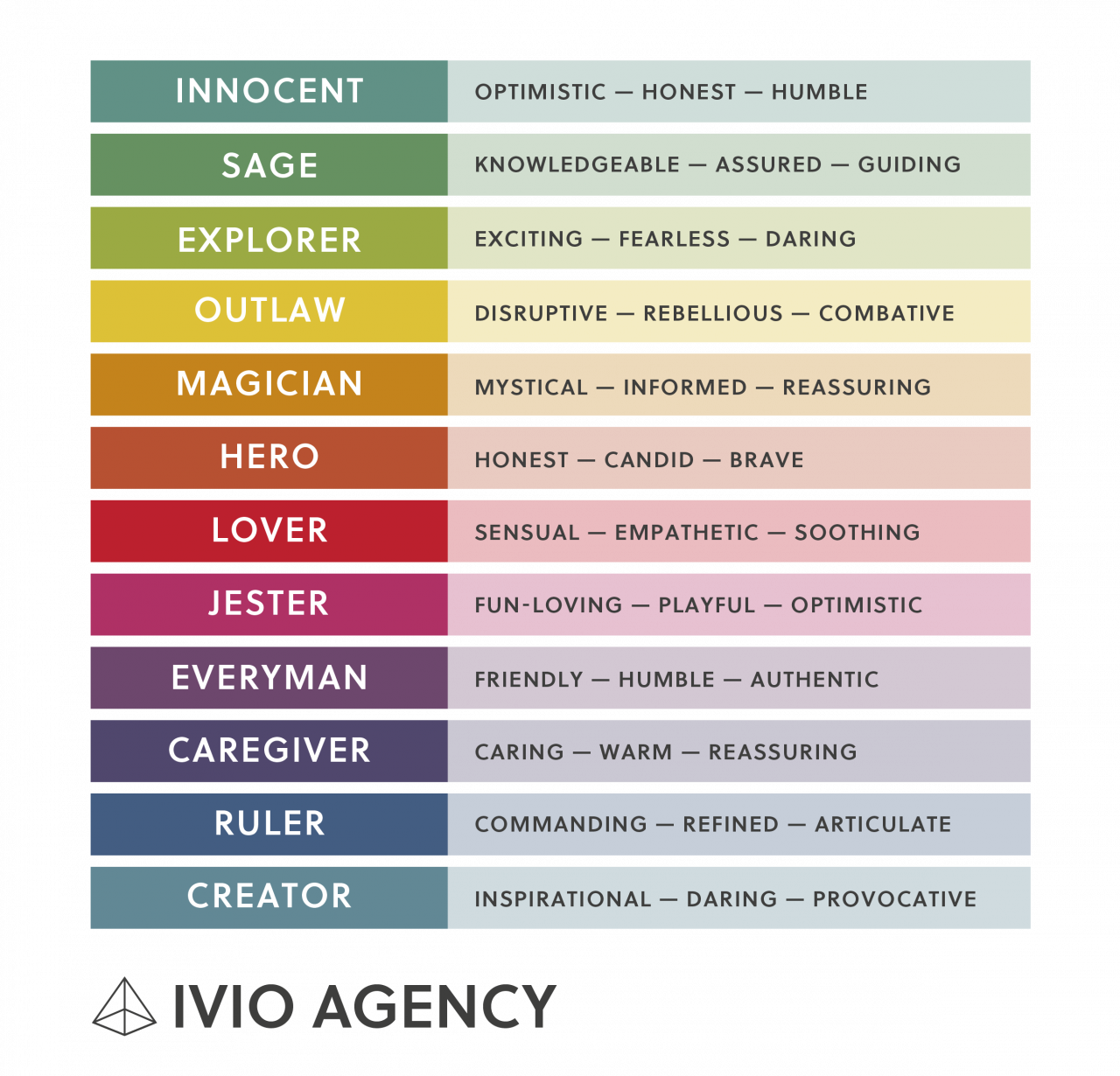Filed Under branding
Brand Archetypes: Storytelling Through the 12 Archetypes
Storytelling has played a significant role in nearly every culture throughout history. It is such an innately human concept that humans tend to think in the form of stories, and storytelling may even be a hardwired part of our brain (Lukas, 2013).
The Evolution of the 12 Storytelling Brand Archetypes
There is empirical and historical evidence of their effectiveness in all storytelling forms. According to the research of Carl Jung, archetypes are primitive, unconscious, and universal prototypes or symbols that humans innately understand. They can be demonstrated with the universal themes, allegories, and character types that can be found in all methods of storytelling – including literature, films, television, and theater.
Archetypes are founded on psychological research that dates back decades ago along with Greek Mythology. (PBS)
How Storytelling Archetypes Work for Brands
When experiencing a story, whether it’s reading the classic, Dante’s Inferno, or watching a Marvel superhero film, archetypes are always present. While experiencing a narrative, we’ll connect to character traits or stories by recalling personal experiences or other stories we’ve read, which create deeper ties with the characters and story. According to the research of Woodside, Sood, & Miller (2008), reliving or re-reading stories leads to a greater sense of enjoyment, understanding, and meaning.
So, why would we use storytelling archetypes in branding?
We tend to think in stories…and storytelling and communication go hand-in-hand.
You’ve may have heard the term “brand storytelling” used in a variety of scenarios. Branding is telling a brand’s story to the world.
We use archetypes as guides in an effort to define your brand persona and bring clarity to your voice and messaging strategies, all the while deepening your consumer’s ties with your brand.
Archetypes guide the branding process and make a brand quickly and concisely understood. Discovering your brand’s archetype builds a framework for how your brand should act, speak, look, and make decisions in a clear and consistent way.
You probably have already been persuaded or seduced by a brand archetype subconsciously without even realizing it.
In fact, according to a professor from Harvard, around 95 percent of purchases are made by subconscious decisions. Connecting with your audience using archetypes will set you apart from your competition.
Building a connection with your key audience while standing out among your competition can be achieved when you discover and align your brand with your Archetype.
Let’s meet the 12 storytelling archetypes and get to know their desires and characteristics.
The 12 Brand Storytelling Archetypes

Brand Archetypes Examples Explained
The Hero:
Nike’s “Just Do It” slogan captures their Heroic perseverance. Nike is seen as a powerful brand that can inspire their consumers to conquer challenges with dedication and hard work.
The Outlaw:
Harley Davidson is the prime example of the Outlaw archetype. Connecting with the desire for liberation by going your own way on the open road, Harley Davidson connects with the rebellious side of their audience.
The Magician:
When we think of the Magician archetype, Disney is a perfect example. From their films to their theme park experiences, they seemingly make dreams come true and transport you into magical story worlds.
The Jester:
Many notable brands such as Old Spice and M&Ms use the humor and lightheartedness of the Jester to represent their brand. The Jester makes consumers laugh and live in the moment, creating a connection and positive association.
The Explorer:
Patagonia uses the spirit of the Explorer to appeal to the daring and adventurous customer. Imagery of backpackers and rock-climbers all over the world helps their consumers imagine themselves on adventurous journeys.
The Lover:
Perfume brands or lingerie brands, like Victoria’s Secret, create relationships with indulgence using the Lover archetype. The Lover promotes closeness and intimacy with their customers by making them feel special.
The Innocent:
Pure and organic brands, like Honest Beauty, turn to the Innocent archetype. The archetype spreads positivity, purity, and wholesomeness and often promotes a healthy lifestyle.
The Everyman:
The Everyman archetype is relatable to just about anyone and everyone. Brands like Target and Ford use this archetype to provide wholesome products and promote authenticity.
The Caregiver:
The Caregiver nurtures and cares for others with the use of brands like Walgreens and Pampers. Health and wellness brands use the caregiver archetype to make others feel secure with their products and services.
The Creator:
Inspiring creativity and innovation, the creator archetype is often used by art and tech companies such as Apple and Crayola.
The Sage:
The Sage archetype uses their knowledge to raise awareness. They believe in the power of truth and are often used by brands like Google, BBC, and The Discovery Channel.
The Ruler:
Luxurious brands use the ruler archetype to show consumers that the finer things in life should be enjoyed. The Ruler is used often by prestigious hotels and car brands, as well as luxury products like Rolex.
Characteristics of the 12 Brand Storytelling Archetypes

Conclusion
In our ever-growing digital world, we only have a few seconds to capture the attention of our potential customers. Creating that strong connection helps your brand rise above the competition.
Harnessing the power of storytelling by using brand archetypes allows your audience to quickly understand what your brand represents while creating a deep and powerful connection with your brand.
Enjoy learning about the 12 Brand Storytelling Archetypes? Check our blog for many more posts about how to use them!
